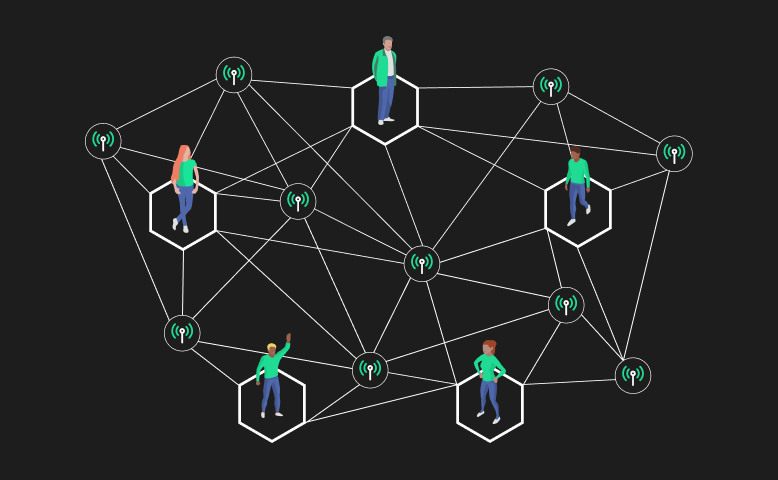Blockchain technology underlies all the work we do at Emrit. It’s become the bedrock of next-generation digital infrastructure. And it’s already proven itself to be implementable and useful in a variety of fields.
If you’re looking for an overview of Blockchain basics, be sure to check out our blog on the subject. In weeks past, we’ve explored the fundamental terms and concepts of Blockchain in multiple ways, from their practical applications to their technological advantages.
In today’s blog, we want to trace the brief but interesting history of Blockchain technology to understand how we’ve gotten to this moment in digital evolution – and perhaps to guess where we might go next. In this blog we will:
- Trace the evolution of blockchain technology, from its intellectual foundations to its current applications
- Origins
- The Significance of Bitcoin as an electronic cash system
- Blockchain 2.0
- Blockchain Today
- Develop an idea of where blockchain technology is headed from here
The History of Blockchain
This blog is organized chronologically, to create a sense of continuity and growth. Like all things, Blockchain started with a thought – and took many years to become a functional reality.
Origins
The first reference to a cryptographically secured chain of blocks was made in 1991, by cryptographers Stuart Haber and W. Scott Stornetta. A few years after that, computer scientist Nick Szabo began developing “bit gold,” a digital currency on a decentralized system.
Those building blocks proved essential precursors to the eventual development of a blockchain. The anonymous developer(s) known as Satoshi Nakamoto released a paper explicating a model for the blockchain in 2008. A year after that, the first blockchain is implemented as the public ledger for bitcoin transactions. As a cryptocurrency, bitcoin required technology to guarantee its value in order to work.
Blockchain and Bitcoin
Indeed, blockchain technology filled the need for a secure ledger system for a non-fiat currency. Thanks to its decentralized model, it guaranteed an immutable ledger, which made the bitcoin network trustless. For the first time, investors could comfortably trade in an all-digital currency, without the need for a physical token of wealth. Digital cash had become a feasible reality.
Bitcoin was not the first digital currency to be proposed, but it was the most successful version by far. The blockchain operating the bitcoin protocol (named “The Blockchain”) remains the largest blockchain to date. That’s unsurprising, given that it has been growing for years longer than any other chain. And Bitcoin mining has become extraordinarily lucrative.
As the first widespread, tradeable digital currency on a blockchain system, bitcoin became an emblem of a new era of digital innovation. Blockchain was the true technological innovation that underlay its success – but it wasn’t until a few years later that it was given room to grow and evolve beyond bitcoin.
Blockchain 2.0 – The Second Generation
In 2014, Blockchain technology was separated from bitcoin to allow it to be used in other kinds of transactions. Thus, Blockchain 2.0 is born. It took no time for the blockchain protocol to be applied to other networks. The second-largest blockchain today, Ethereum, was built on a blockchain platform in 2015.
On the Ethereum blockchain system, computer programs were introduced into the blocks in revolutionary ways. Ethereum allows for the storage and operation of computer code, the foundation of any smart contract. Ethereum distributes a currency called “ether” and has become a recognizable mainstay in the blockchain world.
It was at that time that major financial institutions began exploring how blockchain could benefit them in a digital future. The R3 consortium grew to over 40 member institutions and gave cryptocurrency and blockchain technology a legitimizing boost in the eyes of many economists.
But that boost was inevitable – right before the launch of Blockchain 2.0, bitcoin recorded a value of $1 billion dollars. It had left an economic footprint that became hard to ignore, even as some countries around the world, such as Thailand and China, banned cryptocurrencies.
By the time Ethereum launched, blockchain was well on its way to becoming a mainstream concept.
Blockchain Today
Blockchain technology has evolved and diversified in the last half-decade. It has become functionally essential to a whole variety of sectors, used not only to trade and legitimize currency and contracts, but to improve logistics networks, secure personal information, and sustain and valuate whole new categories of digital artworks.
Check out our blog on example uses of blockchain networks in the present day, where we cover the role of blockchain in government applications, NFTs, and IoT systems, for instance.
Where To Next?
Blockchain technology has arrived at a turning point. In the next decade, it will not only continue to permeate into new sectors and industries, but it will become the foundational technology of the next generation of the internet as a whole.
To help enable that future, a future of greater security, privacy, efficiency, and connectedness, our collective mission must be to establish the global infrastructure for new blockchains. That’s where Emrit comes in.
By establishing ourselves as huge supporters of the decentralized Helium IoT network, Emrit and our army of Emritans has exemplified how a distributed digital infrastructure can legitimize and grow a blockchain network in record time. Our success with the Helium network is present and ongoing – and it’s only the beginning. A peer-to-peer network is bound to become the norm for all manner of projects.
Our vision for the future is to continue launching hardware and software and distributing it to people around the world, people like you. Our plan is based on sharing wealth and technological progress with everyone. That mindset has enabled us to build a network for the Helium blockchain that would have been unthinkable only a few years ago.
To learn more about our work at Emrit and join our community, head back to our home page and join our Discord channel! Become a part of the next chapter in the history of blockchain today.
Summary: A Sudden Success
The History of Blockchain is unique because it is both brief and complex. In a very short period of time, in a historiographic sense, at least, blockchain has transformed from a theoretical concept to the building block of the new digital age. In today’s blog we covered:
- The evolution of blockchain, from its origins and first implementation to its present-day versatility
- The amazing potential of blockchain technology to shape the future of the digital world – and Emrit’s part in it.
All things start out small, as figments of human imagination. And in some cases, they grow into things we couldn’t live without. As the history of blockchain continues to be written, one truth will certainly become apparent: soon enough, our world will be reshaped for the better by blockchain technology.



